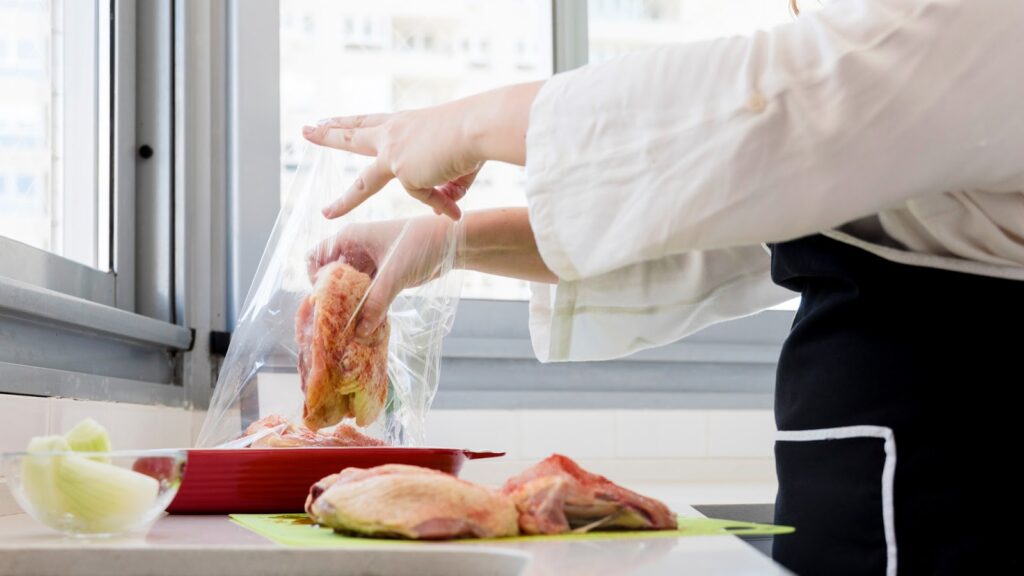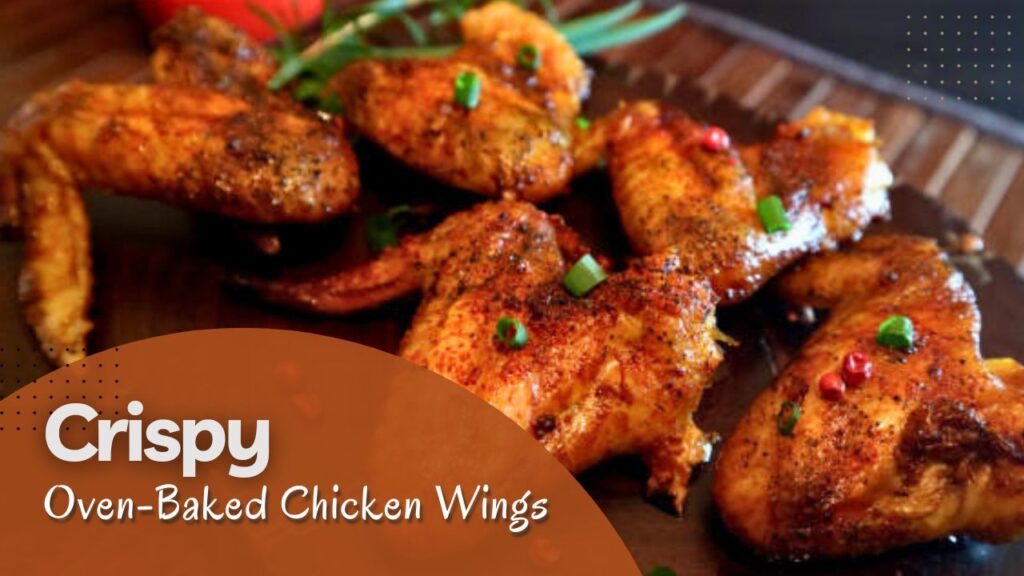Ah, chicken wings! A staple in American culinary culture and beyond, these delightful nibbles have a history as rich and flavorful as the sauces and seasonings they’re often drenched in. Originating from Buffalo, New York, in the 1960s, chicken wings transformed from a once overlooked part of the chicken, often used for stock, into a culinary sensation.
Traditionally deep-fried to golden perfection, a new wave of health-conscious eating brought forth innovations in the kitchen. Enter the era of oven-baked wings. This method, while still delivering the crispy, crave-worthy skin and tender meat, sidesteps the excess oil synonymous with frying.
Benefits of Oven-Baking vs. Deep Frying
One cannot deny the immediate allure of a deep-fried wing. Its crispiness and rich flavor have long been celebrated. However, oven-baking offers a tantalizing alternative without the added guilt. By baking, the wings render out their fat, crisping up naturally. This not only reduces the overall oil and fat content but also presents a version that’s lighter on the palate and the stomach.
Deep frying, while delivering tasty results, also brings its set of challenges – and hazards. The bubbling oil can cause splatters, potentially leading to burns.
Additionally, achieving and maintaining the right oil temperature can be tricky, and mistakes can either result in undercooked food or the breakdown of oil into harmful compounds. Oven-baking eliminates these risks, offering a safer, more consistent method of achieving wing perfection.

Choosing the Right Chicken Wings
Chicken wings, in all their glory, start as a simple raw ingredient. As with many dishes, the final result is significantly influenced by the initial quality of this ingredient. Let’s dive into the age-old debate of fresh versus frozen and guide you through selecting the most flavorful wings for your dish.
Fresh vs. Frozen: Pros and Cons
Fresh Chicken Wings:
Pros:
- Taste and Texture: Fresh wings, as they haven’t been frozen and thawed, often have a more natural and tender texture.
- Immediate Use: They’re ready to be seasoned and cooked without the wait time associated with defrosting.
- Inspecting Quality: When buying fresh, you can easily inspect the wings for their color, smell, and texture to ensure they are of the best quality.
Cons:
- Shelf Life: Fresh wings should be consumed relatively quickly to ensure they remain safe to eat.
- Price: They can sometimes be more expensive than their frozen counterparts due to the convenience and quality.
Frozen Chicken Wings:
Pros:
- Shelf Life: They can be stored for extended periods, providing an always-available option for spontaneous wing cravings.
- Consistency: Commercially frozen wings are often flash-frozen, locking in their quality.
- Economic: Often sold in bulk, they can be more wallet-friendly.
Cons:
- Thawing Time: Preparation requires foresight to allow sufficient time for thawing.
- Potential Freezer Burn: If not stored correctly, wings can develop freezer burn, affecting their texture and flavor.
Tips for Selecting the Best Fresh Wings at the Market
- Color: Look for wings that have a pale pink hue. Avoid those with gray or translucent spots.
- Smell: Fresh wings should have a mild scent. Any strong or off-putting odors are a sign they might be past their prime.
- Texture: The skin should be moist but not slimy. Any sliminess can be an indication of age.
- Packaging: If buying packaged wings, ensure there’s no excess liquid at the bottom of the tray, a sign of aged meat.
Preparation: Getting Your Wings Ready
Before these wings meet their delicious destiny, they require a bit of prep. Proper preparation ensures that the oven’s heat transforms them into the crispy delicacies we adore.
Cleaning and Drying: Ensuring Maximum Crispiness
Cleaning your wings is a step you shouldn’t overlook. Rinse them under cold water to remove any residual debris or feathers. Once rinsed, pat them dry with paper towels. This step is crucial.
Excess moisture is the enemy of crispiness. When water is present, the oven has to work on evaporating this moisture before it can crisp the skin. So, the drier the wing, the crispier the result.
To Marinate or Not? Pros, Cons, and Recommendations
Pros of Marinating:
- Depth of Flavor: A good marinade can infuse wings with added flavors, enhancing the final taste.
- Tenderness: Acidic components in marinades can help tenderize the meat.
Cons of Marinating:
- Soggy Skin: Some marinades, especially those high in sugar, can hinder achieving a crisp skin.
- Time: Marinating requires additional prep time.
Segmenting Wings: Drumettes, Wingettes, and Tips:
A full chicken wing comprises three parts: the drumette (resembling a mini drumstick), the wingette (or flat), and the wingtip. For baking, you’ll typically use the drumettes and wingettes.
To segment:
- Locate the two joints.
- Using a sharp knife or kitchen shears, cut through these joints.
- Save the wingtips! While they aren’t commonly baked, they’re excellent for making stocks.

Seasoning: Flavors that Elevate
Ah, the art of seasoning! The flavors we choose to sprinkle, rub, or soak our chicken wings make all the difference between a good wing and a truly memorable one. Here’s the lowdown on how to elevate those wings to finger-licking goodness.
Dry Rubs: Exploring a Range of Spices and Herbs
Dry rubs are combinations of ground spices and dried herbs applied directly to the wings. They can infuse the wings with robust flavors without the added moisture of marinades.
- Simple & Classic: A mix of salt, black pepper, paprika, garlic powder, and onion powder can offer a flavorful touch.
- Spicy Kick: For those who like it hot, add cayenne pepper or chili powder to the mix.
- Herb Delight: Rosemary, thyme, and oregano can provide a Mediterranean flair.
- Smoky: A hint of smoked paprika or ground chipotle can recreate that grilled smokiness.
Marinades: From Tangy to Spicy – Popular Choices
Marinades involve soaking the wings in a liquid concoction, allowing flavors to seep deep into the meat.
- Classic Buffalo: A combination of hot sauce, butter, vinegar, garlic powder, and Worcestershire sauce.
- Asian Twist: Soy sauce, honey, ginger, garlic, and a splash of sesame oil create an East-Asian flavor profile.
- Lemony Herb: Lemon juice, olive oil, minced garlic, rosemary, and thyme make for a zesty, aromatic marinade.
- Sweet & Spicy BBQ: Your favorite BBQ sauce mixed with some honey and hot sauce can hit all the right notes.
Baking to Perfection
You’ve prepped, you’ve seasoned, now let’s get those wings baked to perfection.
- Spacing: Overcrowding the baking sheet will cause the wings to steam rather than roast, which could deprive you of that desired crispiness. Give each wing its space, allowing hot oven air to circulate around each piece.
- Non-stick Methods: Use parchment paper or a silicone baking mat to prevent sticking. For an extra crispy result, place a wire rack on your baking sheet and lay the wings on top. This method allows the heat to circulate under the wings too.
Oven Temperature and Time: Getting that Perfect Crisp
A high temperature is key to achieving crispy wings. Preheat your oven to around 425°F (220°C). Depending on the size of the wings and the actual oven’s calibration, they’ll usually need about 45 minutes to become perfectly crispy.
Flipping and Rotating: Ensuring Even Cooking
Halfway through the baking time, flip the wings. This will ensure they crisp up evenly on both sides. If you’re baking multiple trays at once, rotate them between the oven racks, ensuring each batch gets equal exposure to the hottest parts of the oven.
Common Mistakes and How to Avoid Them
Every dish has its nuances and potential pitfalls. When it comes to oven-baked chicken wings, there are some common mistakes that many of us have made at one point or another. Let’s delve into these and learn how to sidestep them for wing perfection.
Overcrowding the Pan: Ensuring Each Wing Has Its Space
- The Mistake: It’s tempting to fit as many wings as possible on a pan, especially when cooking for a crowd. However, when wings are too close together, they steam from each other’s moisture instead of crisping up.
- The Solution: Use a larger pan or bake in batches. Ensure that each wing is separated, allowing the oven’s hot air to circulate freely. This results in a crispier skin and a well-cooked interior.
Under-seasoning: Making Sure Your Wings Are Flavorful Throughout
- The Mistake: Under-seasoned wings can be bland, no matter how perfectly they’re cooked.
- The Solution: Always season generously. If marinating, ensure the wings soak for an adequate amount of time to absorb the flavors. If using a dry rub, ensure it’s applied evenly on each wing, and don’t be shy about it.
Inconsistent Wing Sizes: Ensuring Even Cooking
- The Mistake: When wings are of varying sizes, smaller pieces can overcook while larger ones remain underdone.
- The Solution: Try to select wings that are consistent in size. If you have a mix, consider removing the smaller pieces earlier or placing larger pieces in the oven first and then adding the smaller ones later.
Conclusion
The world of wings is vast and varied. Whether you’re a purist who loves the classic Buffalo flavor or an adventurer eager to try a spicy Korean or tangy tandoori rub, there’s no limit to the flavor profiles you can explore.
We encourage you to experiment, play around with seasonings, and most importantly, relish the process. After all, every batch of wings, whether it turns out just right or offers a learning experience, is a step towards mastering this beloved dish.
